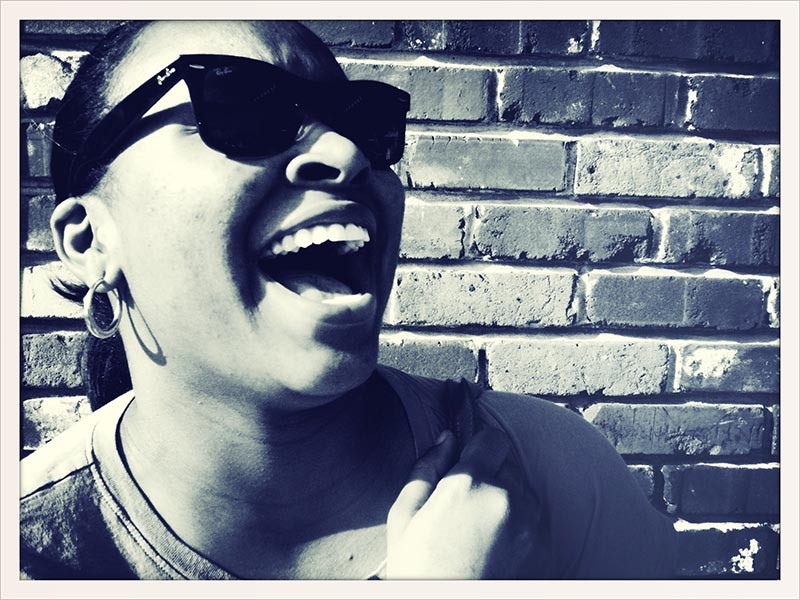–
To those just starting in iPhoneography, welcome. iPhoneography is the microwaved version of art. It is instant gratification to take a photo, edit, and share it with the world. Some may view our work as a novelty but to those who embrace and try to understand the iPhone’s limitations, it’s rewarding to produce art with what some categorize as a “toy camera.”
A gift and a curse of mine has been to pick up a hobby and become consumed by it. I’ve emailed and direct message my fair share of iPhoneographers in an attempt to learn more. One thing I learned early in life is to surround yourself with those who you view as better in a particular field so that you may become more competent yourself. Not only did I ask questions of them but I looked through their bodies of work, leaving comments, hearts, and faves in attempt to understand iPhoneography and photography as a whole and become better in my own work. Here are a few of the lessons I’ve picked up along the away from some of my favorite iPhoneographers.
From @torstengeyer: Shoot consistently. Consistent is whatever time you have during your day or week but get out there and take photos. If professional basketball players take hundreds of jump shots to work on their game, then an iPhoneographer should snap hundreds of photos to hone there craft and perfect their timing. Torsten is the Brett Farve of iPhoneography and very few days past without a quality photo or three.
From @TheSCW: Shoot what you love. If you like flowers, shoot flowers. If you have an affection for the streets, shoot the city. If you don’t want to be boxed in, shoot everything! Photography is no different than picking a book to read. To truly enjoy what you’re doing, you must love what you’re shooting. To truly love what you’re shooting, you must remember that you’re taking the photo for YOU first. If other people love it, good! As long as you love it and remember to stay true to yourself.
From @ScotScott: Every photo should tell a story. Most people associate story telling in photography to street photography but a story can be told through any form. Understand that a photo of a tree stump can tell a story of toughness, stability, and ruggedness just as clearly as a photo of a cowboy in the pastures on his horse.
From @MartyNearDFW: Study the basics of photography. Just because the camera isn’t a DSLR doesn’t mean you have to skip over the simplicities of basic composition. We may not be able to control shutter speed but we can definitely control how a shot is arranged and taken.
From @DixonHamby: Fill the frame. the closer you get to the subject, the more interesting it appears to become. The more simple the arrangement of the photo, the more dynamic the subject.
From @Nique88888: Pay Attention to lighting. iPhones have no flash. We have some apps to emulate flash but ultimately to paraphrase Henry Cartier-Bressen, to use a flash is to be disrespectful to the natural light. Take your photos in a manner that you can embrace the natural light for more even exposures and to cut down on grain.
From @ILoveSweat: Study the greats. I didn’t know of very many “real” or legendary photographers but ILoveSweat showed me a few of his favorites and told me to study the work of people like Ansel Adams and Henry Cartier-Bresson. It’s not so much to emulate their pictures and take the same photos. it’s more of grasping some of the concepts of what comprises a great photo. If their work is popular seventy years after they have taken the photo, then it is the techniques behind the shot and not the equipment. Master the techniques.
From @jonyag: Changing perspectives adds drama to your photos. Just because you are six feet tall doesn’t mean every photo should be from six feet high. Kneel, lay, squat, tip-toe. Do whatever it takes to make this picture special to you and the viewer.
From Jeremy Edwards (@fromthepocket) : Over-processing is a sin. Do not think you can take bad photos and run them through a ton of apps and save them. I admit I probably did it as well as probably 99.9% of other iPhoneographers but a bad photo that’s over processed is now a bad photo with a vignette. Nothing to be proud of.
From me, @JasonLParks: To paraphrase Bruce Lee, after you master it, forget it all. Everything is situational. For me, if I see something interesting, I’m upset if I can’t shoot it THEN. You can never get THAT moment back… THAT lighting back. The moment to shoot it is the moment it registered in your mind that it was picture worthy. Process it now or later, then share it with the world… all on the same device. That’s iPhoneography.
~~~~
Jason Parks is a husband, father, son, friend, professional poker player, & iPhoneographer, in that order.
Flickr: www.jasonlparks.com
Tumblr: www.jasonlparks.tumblr.com
Twitter: @jasonlparks


